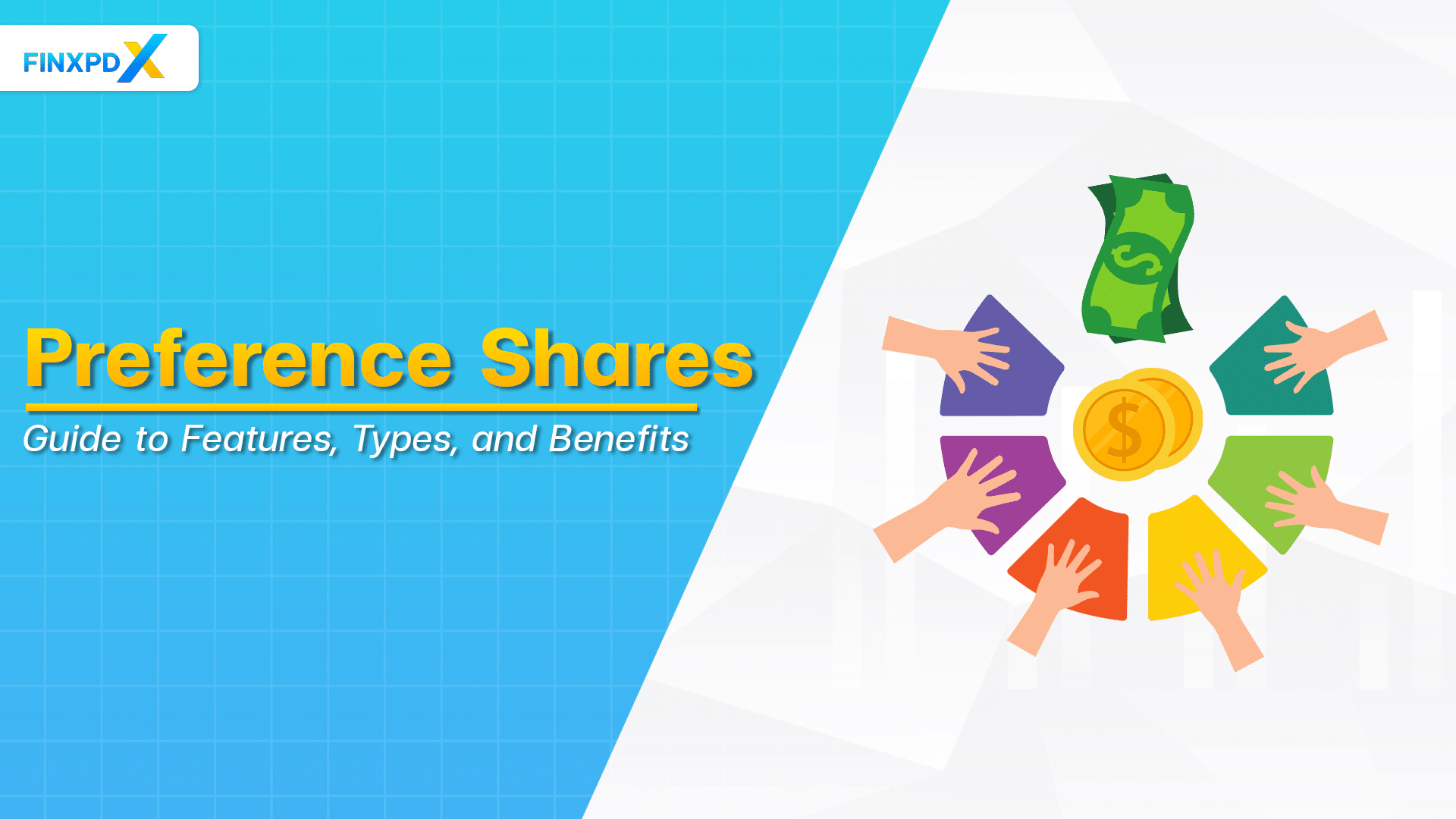Investing in the stock market has various options to consider, each with its own set of advantages and drawbacks. One of these options is investing in preference shares. Although they might not be as popular as common equity or preference shares offer a unique blend of features that make them appealing to certain investors.
In this article, we will explain the preference shares meaning, the types of preference shares, and the difference between equity shares and preference shares.
What Are Preference Shares?
The meaning of preference shares is a unique class of shares within a company. These shares offer investors a fixed dividend payout and take precedence over common equity shares in the event of company liquidation. Unlike common shares, which grant voting rights, preference shares generally do not give their holders the power to influence company decisions.
In simple terms, they are a hybrid financial instrument that combines the features of both bonds and common shares. They offer the regular income typically associated with bonds and possess the potential for capital appreciation, much like common shares.
Key Takeaways
- Preference shares are a type of stock that pays dividends and offers a blend of features between bonds and common shares.
- The dividend rate is crucial for income-focused investors, as it indicates the returns you can expect.
- A strong balance sheet and consistent cash flow are indicators that the company is more likely to meet its dividend commitments.
Core Features of Preference Shares
Preference shares come with a set of unique features. These are features that investors should know:
1. Fixed Dividends
Fixed dividend payments are a distinguishing feature. Investors can count on this consistent income, much like they would with bond interest.
2. Priority in Liquidation
Priority over common shareholders is given during liquidation. If the company goes under, preference shareholders are first in line for asset distribution.
3. No Voting Rights
Generally, preference shares do not come with voting rights. This means investors can’t influence corporate governance.
4. Convertible Options
Convertible options may be available, allowing you to switch your preference shares for common shares. This could offer growth potential.
5. Callability
Callability is a feature where the issuing company has the right to buy back shares. While often at a premium, this feature carries some risk for investors.
6. Cumulative Dividends
Cumulative dividends are a special feature. If a company misses a dividend payment, these missed dividends will accrue and be paid out later.
Types of Preference Shares
There are diverse options tailored to meet different investment goals. To help you make a wise investment choice, look into these types:
1. Cumulative
This type comes with the advantage of accumulating dividends. In a situation where the company can’t afford to pay dividends for a year, these dividends will pile up. Once the company resumes dividend payments, these accumulated dividends are paid out first, ahead of any payments to common shareholders.
2. Non-Cumulative
This type does not accumulate dividends. If the company fails to distribute dividends, you lose out on that payment.
3. Convertible
This type allows for conversion into common shares. This means you have the opportunity to capitalize on the company’s potential growth.
4. Non-Convertible
This type offers no such conversion. They are ideal for those who prefer a fixed income without the volatility associated with common shares.
5. Participating
This type provides an opportunity to participate in excess profits, aside from the fixed dividends you receive.
6. Non-Participating
This type lacks the profit participation feature. Your earnings from these shares are restricted to a fixed dividend.
7. Redeemable
This type comes with a redemption clause. The issuer can buy back these shares after a predetermined period.
8. Irredeemable
This type does not offer a redemption option. They provide a steady income as long as the company exists and pays dividends.
Advantages and Disadvantages of Investing in Preference Shares
Before investing in preference shares, it’s important to weigh the good against the bad. Here’s a breakdown to guide you:
Advantages
1. Fixed Dividends
Fixed dividends make preference shares a reliable income source. You know precisely to expect in terms of returns, which brings a level of predictability to your investment.
2. Dividend Priority
Dividend priority is a significant advantage. Before common shareholders see any dividends, preference shareholders are first in line.
3. Lower Risk Compared to Common Shares
Lower risk is one advantage when compared to common shares. They combine features of both debt and equity, thereby reducing investment risk.
4. Optional Conversion
Optional conversion comes with some types of preference shares. This allows you to switch to common shares if you wish to benefit from a company’s growth.
5. Possible Profit Participation
Profit participation is another perk for some preference shares. Apart from fixed dividends, you can receive extra payouts if the company does well.
Disadvantages
1. Limited Capital Appreciation
Limited capital appreciation is a drawback. Unlike common shares, the room for significant capital gains is restricted.
2. Lower Dividend Rates Than Debt
Lower dividend rates are typically the returns you receive with preference shares compared to debt instruments like bonds. This may result in a lower yield.
3. No Voting Rights
Preference shares do not come with voting rights. This means you won’t have the ability to influence company decisions, unlike common shareholders.
4. Possible Missed Dividends
Possible missed dividends can happen, especially with non-cumulative preference shares. If the company skips dividends, you could lose out.
5. Liquidity Concerns
Liquidity concerns can be an issue. Preference shares may be less liquid than common shares, making them harder to sell at market value.
⚠️ Tip: Always read the terms and conditions of preference shares, paying attention to clauses like call options.
Factors to Consider Before Investing in Preference Shares
This section aims to equip you with the right questions and considerations before you make an investment decision. These factors can serve as a checklist to ensure that you’re aligning your investment choices with your financial goals and risk tolerance.
1. Dividend Rate
The dividend rate should match your income expectations. Compare it with other investments to ensure it meets your financial objectives.
2. Company’s Financial Health
A company’s financial health is a crucial factor. This will indicate if the company is capable of meeting its dividend obligations.
3. Type of Preference Share
The type of preference share plays a pivotal role in aligning your risk and reward. Choose wisely based on your risk appetite.
4. Redemption Features
Redemption features are important if you’re looking for an exit strategy. Make sure to understand the terms under which the company can buy back these shares.
5. Convertibility
Convertibility is a feature worth considering if you aim to capitalize on future growth by converting to common shares.
6. Tax Implications
Tax implications should not be overlooked. Different tax laws can affect your net return, so consult a tax expert for guidance.
Conclusion
Investing in preference shares offers an appealing mix of stable income and lower risk compared to common equity shares. They’re especially valuable for those who prioritize dividends, but this shouldn’t be the sole reason for choosing them.
It’s essential to factor in elements like the dividend rate, the overall health of the issuing company, and the share’s specific features. Furthermore, always consult with a tax advisor to understand the implications of your overall returns.
FAQs
There are a unique type of stock that offers a fixed dividend before any dividend is paid to common stockholders. They’re often considered less risky than common shares but more risky than bonds.
Buying is similar to buying common shares. You’ll need a brokerage account to start. Once your account is set up, you can search for companies that offer preference shares and purchase them directly through the platform.
There are 8 types including cumulative, non-cumulative, convertible, non-convertible, participating, non-participating, redeemable, and irredeemable.
A typical example would be a “5% Cumulative Preferred Stock.” This means the preference share pays an annual dividend of 5% on the par value of the stock and accumulates any missed dividends for future payments.
The primary difference is the level of risk and the structure of dividends. Equity shares are riskier but offer potentially higher returns and variable dividends. Preference shares provide a fixed dividend and are generally considered less risky.
Related Articles:
- What Is ETF?: A Guide to Pros, Cons, and How to Invest
- Large-Cap Stocks: A Good Choice for Long-Term
Read more: Stocks








